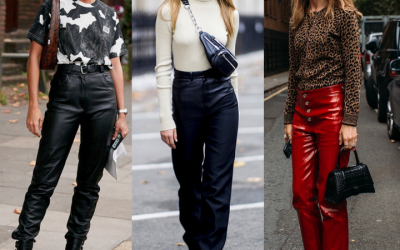Slow fashion is a movement that advocates sustainable practices in the fashion industry. It promotes environmental, social, and animal welfare as priorities over industrial efficiency and economic performance.
It developed as a countermovement to fast fashion and, in many ways, can be considered its polar opposite.
When something like that happens, it’s worth digging into the reasons why. What was so egregious about fast fashion that galvanized a countermovement? Does slow fashion only exist because of fast fashion?
We’ll try to answer those questions in this article.
What Are The Principles of Slow Fashion?
Slow fashion is the antithesis of “fast fashion;” it encourages buying fewer, higher-quality clothes that will last longer.
While there are no set rules for what constitutes slow fashion, some key principles include designing clothes to be versatile and timeless, producing them using sustainable methods, and recycling or upcycling old garments whenever possible.
Where fast fashion values an efficient production process, slow fashion values small-scale designers and manufacturers.
Where fast fashion aims to reduce material costs, often at the expense of the environment, slow fashion promotes sustainable materials.
Where fast fashion advances nearly mindless consumption, slow fashion aims to create a more sustainable fashion industry starting with consumer attitudes.
Surely, you get the idea by now.
Here’s what that looks like in more pragmatic terms.
Slow Fashion Promotes Zero Waste
One of the most fundamental principles of slow fashion is the idea of textile waste reduction. The less waste we create, both upstream and downstream, the better.
This means designing clothes that can be reused or recycled, choosing sustainable materials whenever possible, and reducing consumption. It also means looking for ways to eliminate waste in the production process.
Sure, completely eliminating waste may not be entirely possible in the fashion industry or in other areas. But, the slow fashion movement generally goes by the mentality that perfect is the enemy of good enough.
Every action we can take to reduce waste is a positive action for slow fashion.
Slow Fashion is Ethical Fashion
Ethical fashion is a broad term that, at its heart, refers to the working conditions of people in the fashion industry.
In particular, it focuses on improving these conditions for workers who are often treated as little more than disposable bodies so companies can produce clothing cheaply and efficiently.
This is one of the many reasons why slow fashion and ethical fashion are often discussed in the same breath.
Slow fashion aims to create a more sustainable and humane fashion industry, where workers are treated with respect and paid fairly for their labor.
It’s not always perfect, but the movement is gradually making progress.
Slow Fashion Supports Local Economies
When you buy something from a small, local designer, you’re not just buying a piece of clothing. You’re also supporting the local economy.
This is one of the key reasons why slow fashion is often seen as being in conflict with fast fashion. Fast fashion typically relies on cheap labor in developing countries, while slow fashion champions small-scale designers and manufacturers who use sustainable methods to maximize social and environmental performance.
Sure, you’ll give up cheap clothing in a lot of instances to adhere to slow fashion, but the reward is a more human-centered fashion industry.
Slow Fashion Brands Value Better Quality Garments
Another one of the defining features of slow fashion is an appreciation for quality garments.
This means investing in well-made clothes that will last longer, as opposed to buying cheap, disposable clothing that falls apart after a few washes.
It also means using high-quality materials that often make garments more costly to manufacture. But, that remains aligned with a movement that eschews unmetered fashion consumption.
Slow Fashion Values Fair Treatment of Animals
One of the lesser-known aspects of the slow fashion movement is its stance on animal welfare.
This means using materials that don’t involve cruelty to animals, such as leather, wool, and silk. It also means being mindful of how those materials are sourced.
For example, many sustainably sourced materials like bamboo and cotton can be grown without pesticides or harmful chemicals.
Where Does Slow Fashion Come From?
Slow fashion has been around for quite some time, but it’s only recently that the term has started to gain traction.
The slow fashion movement was born out of a need for more sustainable and ethical practices in the fashion industry. It began as a grassroots effort by designers and consumers who wanted to create a more responsible alternative to fast fashion.
Some tie its genesis to the book Overdressed: The Shockingly High Cost of Cheap Clothing by Elizabeth Cline. The book is a scathing critique of the fast fashion industry and the deplorable practices some brands use to increase profits.
Slow Fashion Examples
There are many examples of slow fashion brands, but here are a few notable ones:
- Patagonia: one of the first fashion brands to adopt sustainable practices and continues to invest heavily in environmental and social responsibility programs.
- The North Face: has set the (ambitious) goal of producing 100% responsibly-sourced apparel by 2025.
- Toms Shoes: another brand with bold goals – 100% sustainable organic cotton and packaging from sustainably managed forests by 2025.
Each of these brands has a different approach to sustainability, but they all share one common goal: creating quality garments that don’t harm the environment or people any more than absolutely necessary.
Slow fashion is still a relatively new concept, but it’s growing rapidly as the public becomes more aware of its benefits.
It remains to be seen whether slow fashion can overtake fast fashion in popularity, but there are many reasons why we should hope so.
Slow Fashion Is A Revolution, Not Just a Trend
The last thing to remember about slow fashion is that it’s not a trend. It’s a movement with ideas and values that go beyond simply looking good.
It’s a part of the larger goal of living sustainably on a planet with finite resources.
That doesn’t mean trends can’t be inspired by slow-fashion ideas (and often are). But, adopting slow fashion principles requires making a conscious decision to sometimes spend more, and sometimes buy less, in the interest of a better future.




